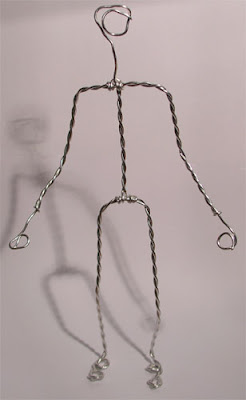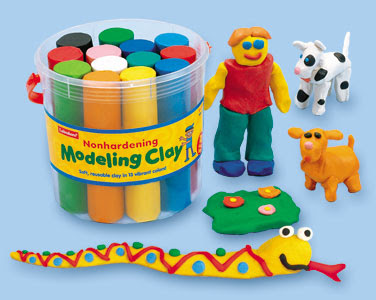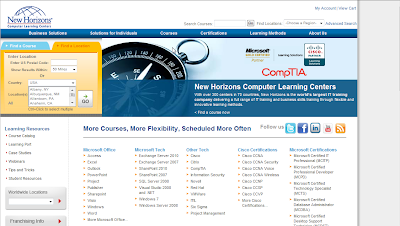Hello
Today I will be discussing animation tips when working with claymation. One of the most important tips I can tell you is to be careful with your background and remember to keep it simple. Here are 10 animation tips.
1. You can simply use construction paper and different color cut outs as well as clay to make scenic items such as clouds, rain, flowers, trees, etc.
2. When you are planning your claymation video, you may want to shoot the scenes backwards with your digital camera.
3. Take 8 - 15 frames per second of finished video (approximately 450 pictures = 30 seconds of video!)
4. Move your character in small amounts at a time.
5. Have handy some wet wipes to keep your hands clean.
6. Avoid moving items in the scene that are not suppose to move.
7. Change the camera view or zoom occasionally.
8. Make sure you set your camera on a tripod and use fresh batteries.
9 Your digital camera needs to be cleared of all pictures before you start taking pictures.
10. Make sure your students have all their materials and supplies before taking the pictures.
Here are 7 video tips you want to be aware of.
1. Take out any pictures where you can see hands.
2. Add background music, sounds and voices. It can be very challenging to use voices to lip movements in stop motion animation; voice-overs are much easier.
3. When adding music use free sources for educators like http://www.freeplaymusic.com/
4. When filming, set the camera on a tripod close to the background. Make sure the background is in the frame.
5. Once filming begins, make sure the camera does not move.
6. Take many pictures. You can always delete excess pictures later.
7. Move characters approximately 1/4 of an inch between shots.
Check out these examples.
Mario's Pizzaria.
Stop, Drop, and Roll!
The Butterfly Cycle
Transformations
After you have all your pictures, audio, and sound bytes, create one folder on your desktop and place all the items in it. To produce your move you want to use a free movie editing program on your computer called Movie Maker 2.
To find Movie Maker on your computer go to "Start" and the program is either in the accessories folder or in your programs file. Look for the little color film real with a tailing filmstrip icon. You want to be familiar with this program. For a free video tutorial please visit: www.atomiclearning.com/moviemaker2 To put the finishing touches on the movie you will add titles, credits, narration and music in Movie Maker 2.
Free Resources
Royalty Free Music Sites
http://www.partnersinrhyme.com/
www.beatmode.com/free-loops/
www.mfwp101.com/freemusic.htm
www.flashkit.com/loops/
www.hooverwebdesign.com/sounds/index.html
http://www.freeplaymusic.com/
Sound Effects
www.pacdv.com/sounds/index.html
Hope you enjoyed the 3 part series on claymation. We will see you next week with another exciting topic in technology. Take care.
September 26, 2010
September 19, 2010
Teaching with Claymation: Part 2 of 3
Greetings,


* To create the bulk and shape of the character you will need to cover the wire with foil folded into strips. You can also use styrofoam as well.
* Colored nonhardening modeling clay
 * You also might want to visit an art and craft store to get plastic eyes, mouths and noses for your character. To mold the clay on your character you can use your fingers ore plastic spoons to shape the clay. If parts of the character will move, it may be easier to make two or more clay pieces of that part such as a winking eye or moving mouth. You can also use the clay to build props like clouds, lakes, rivers, trees, etc. on to colored construction paper for your backdrop or background. You can also use sand, grass, dirt, rocks, twigs, marbles and confetti etc.
* You also might want to visit an art and craft store to get plastic eyes, mouths and noses for your character. To mold the clay on your character you can use your fingers ore plastic spoons to shape the clay. If parts of the character will move, it may be easier to make two or more clay pieces of that part such as a winking eye or moving mouth. You can also use the clay to build props like clouds, lakes, rivers, trees, etc. on to colored construction paper for your backdrop or background. You can also use sand, grass, dirt, rocks, twigs, marbles and confetti etc.
After you have all the supplies you are ready to set your stage.
1. When students are working with claymation there should be no more than 4 to a group.
2. Students will need to create a flowmap of step by step of the movement of the story.
3. Make the characters.
4. Make the backdrops or background - The backdrops can be done in a shoebox, shad.ow box, on a chair, in a cubby hole, base of a chair, on colored construction paper or poster board (Remember to keep it simple).
5. Work on lighting - Do you want the characters to stand out more?
6. Think about the camera view, taking the photos and making the movie.
Next week I will be discussing animation tips, video tips, filming tips, producing the movie, adjusting timing, adding titles, credits, narration and music. I will be sharing free tutorials and additional web sites for more ideas. I will also be posting more examples of claymation projects. See you next week.
Today I will be discussing how to build characters and props. I will also talk about how to build your backdrop or background. Let's get started, you will need the following items to build your characters.
* Armature for the Skeleton, which will provide strength and flexibility.


* To create the bulk and shape of the character you will need to cover the wire with foil folded into strips. You can also use styrofoam as well.
* Colored nonhardening modeling clay
 * You also might want to visit an art and craft store to get plastic eyes, mouths and noses for your character.
* You also might want to visit an art and craft store to get plastic eyes, mouths and noses for your character. After you have all the supplies you are ready to set your stage.
1. When students are working with claymation there should be no more than 4 to a group.
2. Students will need to create a flowmap of step by step of the movement of the story.
3. Make the characters.
4. Make the backdrops or background - The backdrops can be done in a shoebox, shad.ow box, on a chair, in a cubby hole, base of a chair, on colored construction paper or poster board (Remember to keep it simple).
5. Work on lighting - Do you want the characters to stand out more?
6. Think about the camera view, taking the photos and making the movie.
Next week I will be discussing animation tips, video tips, filming tips, producing the movie, adjusting timing, adding titles, credits, narration and music. I will be sharing free tutorials and additional web sites for more ideas. I will also be posting more examples of claymation projects. See you next week.
Labels:
animate,
animation,
armature wire,
backdrop,
background,
build,
characters,
clay,
claymation,
filming,
flexibility,
foil,
free,
mouth,
props,
skeleton,
stage,
strength eyes,
styrofoam
September 12, 2010
Teaching with Claymation: Part 1 of 3
Greetings,
Hope you are doing well this week. What is Claymation? Claymation is short for Clay Animation, which includes the following:
1. Any animation using clay, materials and props.
2. Traditionally time - consuming technique of stop motion video.
3. Using a digital cameras and computers provide accessibility in the classroom.
4. Using Movie Maker 2 or a video editing program.
Claymation can be used for:
* Content on a website
* A prop for a speech
* A multimedia story
* A concept or objective demonstration
* A public service announcement
Why do you want to use Claymation?
1. Motivates, engages and challenges students to be creative.
2. Can be applied to any subject level and area.
3. Perfect for exploring concepts and objectives.
4. Requires planning, organizing and teamwork.
More Ideas for Using Claymation in the Classroom.
* Storytelling
* Creative writing
* Explanations of the Scientific processes
* Human body functions
* Visualizing math concepts
* Recreating historical events & time periods
* Demonstrating physical activities - proper exercise
Please play the video below to see how I have used claymation with a PE Objective in the past.
How do I start making a claymation video?
1. Select your idea or objective you want to communicate to your audience.
2. Plan and build a flow map of your idea.
3. Start building your character and background or back drop for your movie.
4. Take photos of movement of the character.
5. Make the Movie.
In the next 2 weeks, I will be sharing with you the following ideas:
How to build your character with clay, armature, foil, styrofoam, construction paper, small eyes, mouths, etc. and props (rocks and sticks). How to set your stage, claymation tips, animation tips, video tips, filming, editing and producing the film. I will also be sharing with you more claymation videos. To produce one video, your students may want to work in groups and it may take 3 -5 days for the project to finish. See you next week.
Hope you are doing well this week. What is Claymation? Claymation is short for Clay Animation, which includes the following:
1. Any animation using clay, materials and props.
2. Traditionally time - consuming technique of stop motion video.
3. Using a digital cameras and computers provide accessibility in the classroom.
4. Using Movie Maker 2 or a video editing program.
Claymation can be used for:
* Content on a website
* A prop for a speech
* A multimedia story
* A concept or objective demonstration
* A public service announcement
Why do you want to use Claymation?
1. Motivates, engages and challenges students to be creative.
2. Can be applied to any subject level and area.
3. Perfect for exploring concepts and objectives.
4. Requires planning, organizing and teamwork.
More Ideas for Using Claymation in the Classroom.
* Storytelling
* Creative writing
* Explanations of the Scientific processes
* Human body functions
* Visualizing math concepts
* Recreating historical events & time periods
* Demonstrating physical activities - proper exercise
Please play the video below to see how I have used claymation with a PE Objective in the past.
How do I start making a claymation video?
1. Select your idea or objective you want to communicate to your audience.
2. Plan and build a flow map of your idea.
3. Start building your character and background or back drop for your movie.
4. Take photos of movement of the character.
5. Make the Movie.
In the next 2 weeks, I will be sharing with you the following ideas:
How to build your character with clay, armature, foil, styrofoam, construction paper, small eyes, mouths, etc. and props (rocks and sticks). How to set your stage, claymation tips, animation tips, video tips, filming, editing and producing the film. I will also be sharing with you more claymation videos. To produce one video, your students may want to work in groups and it may take 3 -5 days for the project to finish. See you next week.
Labels:
animation,
clay,
claymation,
computer,
creative,
digital video camera,
ideas,
making a movie,
materials,
objective,
pictures,
props,
stop motion,
warm up waldo,
Windows Movie Maker 2
September 5, 2010
30 in 48 Days!

Greetings,
Hopefully you are having a great Labor Day today. This week I will be sharing with you the exciting trainings I have been involved in over the summer. Yes, it is true that I had the opportunity to take over $11,000 of advanced technology training classes and received 25 software books with lessons, exercises and online files.
Our technology department was so kind and gracious to purchase Summer PassPort Passes from New Horizons Computer Learning Center for a few of our Computer Lab Teachers. New Horizons is a technology learning center where you can take classes for a nominal fee. I participated in almost 30 advance technology classes. Some of the classes included Adobe CS4 software like Photoshop (web and print), Illustrator, Flash, Dreamweaver and Acrobat. Other classes included, Web Design with XHTML, HTML, CSS and SharePoint Designer 2007.
I can not forget the MS Office 2007 classes I took, which includes Word, Excel, PowerPoint, Access, Publisher and Visual Basics Application (VBA) Programming. VBA is a class where you learn how to create macros or type code in MS Office programs. Out of all these classes I participated in, I had the chance to take Beginning, Intermediate and Advanced classes. Most of the classes were anywhere from 7 hours to 14 hour classes and daily classes would be from 8AM - 4PM, Mon. - Fri.
I knew a lot of the MS Office software programs, but this gave me a chance to brush up and review key concepts, tasks and ideas. I did not realize the value of these classes. If you were to take these classes on average it would cost you around $300 and if you were to take the Adobe classes it could run you nearly $700. What an investment! If I had to add the total instructional hours it would total over 200 hours!
I am sharing this information with you not to impress you, but to impress upon you to really achieve, and reach your goals and to continue to learn in whatever field you are in. I now have build up my technology library and created a reference library. These are invaluable resources and references that will assist me to create additional tasks and exercises for all my teachers and students.
I also met some great instructors and students at New Horizons. I hope to continue my education and attend New Horizons next year to take MS Office 2010 classes and Adobe CS5 classes. For additional resources for your training needs, please visit http://www.newhorizons.com/ or you can get a subscription for online learning video classes at www.atomiclearning.com Hope to see you next week. Have a great week!
Labels:
access,
advance,
css,
dreamweaver,
excel,
flash,
html,
illustrator,
intermediate,
investment,
learning,
new horizons,
office 2007,
photoshop,
powerpoint,
sharepoint,
VBA Programming,
word,
xhtml
Subscribe to:
Comments (Atom)
